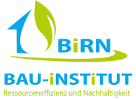General
Requirements
In order to qualify for the award of the QNG Certification, a building has to be certified by means of a registered assessment system for sustainable building and fulfil special requirements in the public interest. The associated assessments have to be performed in line with the system rules of the relevant QNG assessment system.
While the system structures, weighting, assessment methods, assessment standards and verification methods of these QNG assessment systems may differ, they are all based on a shared understanding of sustainability.
Requirements for assessment system registration
The registered QNG assessment systems act as tools for quality assurance, are based on holistic assessments and promote transparency with regard to building qualities.
In order to be registered, assessment systems have to fulfil the requirements for the registration of assessment systems set out in the QNG Manual and Annex 2 to the QNG Manual. This ensures that QNG Certification assessment systems are fully aligned with internationally recognised sustainability goals, comply with national and international standards and support the implementation of Germany's Sustainable Development Strategy.
Information on the requirements of the registered assessment systems can be found in the assessment systems’ criteria specifications or can be obtained from the system providers and certification bodies.
General requirements for QNG Sustainable Building Certification
The registered assessment systems assess the following criteria:
Socio-cultural and functional quality
The criterion of socio-cultural and functional quality puts users’ needs centre-stage. Among other things, it addresses comfort, indoor air hygiene, the user-friendliness of technical systems, accessibility and safety.
Economic quality
Economic quality assesses the costs associated with a building over its life cycle. It generally also assesses other qualities such as value retention and adaptability.
Ecological quality
Ecological quality assesses potential environmental impacts over the building’s entire life cycle. This includes greenhouse gas potential, resource utilisation and harmful and hazardous substances in the building materials.
Technical quality
Amongst others, this criterion assesses the quality of the building’s envelope, its recyclability and dismantling friendliness.
Process quality
The process quality depicts the most important requirements for planning, building and the preparations for a building's operating phase and can consequently be used as a guideline for a project’s successful implementation.

Comfort and functionality
All of the planning processes essentially centre on a building’s use, and the fulfilment of the associated functional requirements is a key building quality feature. People in western industrialised countries spend up to 90 % of their time indoors. (1)Hence, building design can significantly impact on health and well-being. In order for buildings to make a positive contribution to health and well-being, they have to be comfortable, healthy and designed for inclusive use.
This is assessed via the following:
- The fulfilment of specific usage requirements for ensuring a high level of user satisfaction, which have to be defined separately for each type of use,
- the level of accessibility on the property, at access points to the building, in public transport areas and in selected areas of use, designed to enable people with limited mobility to lead an independent life and participate fully in all areas of life,
- the thermal comfort in summer with the aim of ensuring health, performance and user-friendliness,
- the type and quality of the provision of daylight and artificial light as well as the conditions for looking outside and
- in the case of residential buildings, there is an additional requirement for sound insulation to fulfil the basic requirements for health, performance, user satisfaction, privacy and discretion.
(1) World Health Organization, Combined or multiple exposure to health stressors in indoor built environments (World Health Organization, 2014)
Resource consumption and environmental impact
The creation of buildings requires a considerable amount of resources and has a high environmental impact. From a cross-sectoral perspective, the construction and building sector is responsible for around 40 % of greenhouse gas emissions (2) and over 50 % of waste generation (3)in Germany. At the same time, urban and transport areas are still increasing by over 50 hectares every day (4).
Hence, this criterion assesses the following:
- Amount of land used with the aim of reducing land use, preventing urban sprawl and minimising soil sealing,
- Natural resources used and the building’s impact on the global environment with the aim of protecting natural resources and limiting negative impact on the global environment,
- The building's recyclability and dismantling friendliness in conjunction with long-lasting and adaptable structures with the aim of closing or slowing down material cycles,
- The reduction of risks to health and the local environment through systematic selection of the building products and
- drinking water consumption over the building's period of use.
(2) BMWi, “The high levels of energy consumed by the building sector“, Newsletter Energiewende, No. 22 (2014)
(3) “Waste balance (Waste generation/destination, waste intensity, waste generation by economic sector)”, Federal Statistical Office (Destatis), 30 June 2021
(4) “Area indicator ‘Increase in settlement and transport areas”, www.destatis.de, 23 November 2021
Efficiency, costs and long-term value stability
Property is expensive to build and ties up capital for a long period of time. At the same time, properties also have to be constantly maintained and operated. This is why long-term value retention is important - all the more so if you also intend to use your property for your retirement - as is the appropriateness of the running or building utilisation costs.
Hence, the following needs to be taken into account:
- A building's flexibility and capacity to adapt to changing user requirements and use conditions to ensure the building’s continued use and that it can be leased or marketed over the long term and in the future, and
- it’s space efficiency as an indicator of the quality of the floor plan with regard to the extent to which built space is used to meet accommodation or construction requirements with the aim of ensuring efficient use of developed areas.
Planning processes and management requirements
The following criteria have to be taken into account:
- The type and scope of the conditions created for ensuring optimal use and management of the building while in operation in order to support the process of recording, evaluating and continuously improving operating and utilisation parameters,
- For non-residential buildings, the quality of the project’s preparation, including conceptual approaches to accounting for sufficiency aspects, also have to be assessed, and
- for complete refurbishments, a comprehensive and systematic inventory analysis and detailed (partial) dismantling plan.
The individual requirements are set out in the criteria lists of the registered assessment systems. While the exact methods, assessment criteria or the verification procedures used by the registered assessment systems may differ, they all have to address the following topics in order to qualify for registration for QNG Certification.
Special
Requirements
Sustainability certifications cover all of the key aspects of sustainable construction. In order to be awarded QNG Certification, buildings have to meet a number of additional minimum requirements for criteria that are of particular interest to the public.
QNG Certification covers two requirement levels, which only differ with respect to their minimum requirements for criteria that are of particular interest to the public. Hence, the different award types (QNG-PLUS and QNG-PREMIUM) awarded on fulfilment of either requirement level act as instant indicators of whether a sustainable building meets above-average quality (QNG-PLUS) or significantly above-average quality (QNG-PREMIUM) requirements.
The different requirements for QNG-PLUS and QNG-PREMIUM Certification are detailed in Annex 3 to the QNG Manual.

Greenhouse gasses and primary energy over the life cycle
Climate change is one of the greatest challenges of our time. In August 2021, the German government responded to this challenge by amending its Climate Protection Act to make it legally binding for the country to achieve greenhouse gas neutrality by 2045. This means that the goal of becoming greenhouse gas neutral by 2045 is now enshrined in German law. By this time, all of the buildings that are being built today will have become part of the country's building stock without virtually any changes.
From a cross-sectoral perspective - i.e. when including emissions from the manufacture of building products and the provision of energy for building management - building-related emissions currently account for around 40 % of greenhouse gas emissions in Germany (5). This makes it crucial for us to start investing in the climate-neutral building stock of tomorrow today.
The Building Energy Act (GEG) sets out binding requirements for the energy required to operate a building. The measures necessary to minimise energy demand are tried and tested and simultaneously reduce greenhouse gas emissions and the use of fossil fuel-based primary energy to operate a building. This makes building construction more important in terms of the overall greenhouse gas emissions that are generated.
This is why, in future, it will be increasingly important to include the part of a building responsible for grey emissions in any sustainability considerations. This will require taking the manufacture, maintenance and future processing and disposal of building products into account. In addition to energy-efficient operation, it is also possible to reduce greenhouse gas emissions and the use of fossil fuels through resource-efficient construction and the use of renewable raw materials. The aim of all of this is to optimise building construction and operation in terms of environmental impacts. The measures for achieving this goal should be based on performance and have deliberately not been specified.
All of the assessment systems registered for QNG Certification use life cycle assessments to evaluate a building’s environmental impact over its entire life cycle. The QNG builds on this wealth of experience. The QNG accounting rules comply with European standards. They regulate the inclusion of building services and user electricity, and set out clear rules for allocating datasets to building products, services and processes. The QNG-PLUS and QNG-PREMIUM requirement values have been defined on the basis of the QNG’s standardised accounting rules, which ensures the use of uniform standards and comparability regardless of the assessment system used.
By now, there are various programmes and calculation tools for performing life cycle assessments. For a list of the software recommended by the Gütegemeinschaft 18599, please visit https://www.18599siegel.de/qng-validierung. In addition, it is also possible to use LCA tools that have been recognised by the certification bodies.
QNG life cycle assessments have to be performed using the LCA calculation values table for building materials, components and systems in the version specified in accordance with the QNG accounting rules for non-residential buildings.
Residential buildings
QNG sets out specific benchmarks for residential buildings.
For QNG-PLUS, the maximum greenhouse gas emissions generated over a building’s life cycle must not exceed
24 kg CO2e/m² a and the calculated primary energy demand for non-renewables over a building's life cycle must not exceed 96 kWh/m² a.
For QNG-PREMIUM, the maximum greenhouse gas emissions generated over a building’s life cycle must not exceed
20 kg CO2e/m² a and
the calculated primary energy demand for non-renewables over a building's life cycle must not exceed 64 kWh/m² a.
Non-residential buildings
For non-residential buildings, the benchmarks are set on a case-by-case basis because of the wide range and potentially significant differences between the buildings being assessed. They are made up of a building-related component for the building, as well as components for the building’s operation and utilisation, which are further subdivided. The requirement value calculation details are set out in Annex 3.2.1.2 ‘LCA Requirement Value for Non-residential Buildings’ to Annex 3 of the QNG Manual.
Both the building-related and the operation-related components are subject to equally strict requirements for new buildings and refurbishments.
When working with refurbishments, it is possible to offset higher emissions generated during the building's operation with the lower grey emissions associated with the continued use of an existing building structure.
(5) Livia Ramseier and Rolf Frischknecht, The Environmental Footprint of Buildings in Germany, publ. by BBSR, BBSR-Online-Publication 17, 2020
Sustainable material production
Creating a building requires the use of a considerable amount of materials that are extracted from the environment. In this respect, care must be taken to ensure that materials are extracted as sustainably as possible. In particular, the potentially climate-friendly use of wood in construction must not be at the expense of the ecosystem services provided by a forest.
The use of certified wood and wood-based materials from sustainably managed forests guarantees a level of forest management that exceeds legal standards and takes into account essential ecological, economic and socio-cultural requirements - including in countries with legal standards that are not comparable to those in Germany.
The fulfilment of these requirements can be verified by means of:
- PEFC Certificates (Programme for the Endorsement of Forest Certification Schemes) and
- FSC Certificates (Forest Stewardship Council) or
- comparable certificates or other documentation confirming that the PEFC or FSC criteria applicable to the respective country of origin have been met.
The use of recycled materials has the potential to significantly reduce the use of primary raw materials in the construction industry. The primary raw materials assessed under QNG are concrete, earthwork materials and plant substrates. This requirement currently only applies to non-residential buildings.
Building materials with significant recycled material content are defined as:
- Concrete produced with recycled aggregates in accordance with DIN EN 12620 in the maximum permissible proportions in accordance with the relevant applicable guideline of the German Committee for Reinforced Concrete (DAfStb).
- Unbound earthwork materials made from certified, quality-controlled recycled materials, e.g. for use as sub-bases under foundations or for building paths on the property and
- Plant substrates made from quality-controlled recycled building materials such as brick chippings for building and landscape greening.
If it is not possible to produce concrete components with a significant amount of recycled materials because of the applicable recognised rules of technology, their masses can be deducted from the mass balance.
Data sources:
www.fsc-deutschland.de
www.pefc.de
www.recyclingbaustoffe.de
Residential buildings
A building may only be awarded QNG-PLUS Certification if at least 50 % of the newly installed timber, wood products and/or wood-based materials are demonstrably from sustainably managed forests.
A building may only be awarded QNG-PLUS Certification if at least 80 % of the newly installed timber, wood products and/or wood-based materials are demonstrably from sustainably managed forests.
Non-residential buildings
A building may only be awarded QNG-PLUS Certification if at least 70 % of the newly installed timber, wood products and/or wood-based materials are demonstrably from sustainably managed forests and
at least 30 % of the mass of the concrete, earthwork materials and plant substrates used in building construction and civil engineering (total mass) has a significant recycled content.
A building may only be awarded QNG-PREMIUM Certification if at least 85 % of the newly installed timber, wood products and/or wood-based materials are demonstrably from sustainably managed forests and
at least 50 % of the mass of the concrete, earthwork materials and plant substrates used in building construction and civil engineering (total mass) has a significant recycled content.

Avoidance of harmful substances in building materials
In addition to serving personal interests in a healthy living environment, sustainable buildings serve a public interest in low levels of pollution from building materials. Pollutant exposure during material processing in the building trade is usually much higher than exposure levels experienced by users. The manufacture of chemicals also harbours risks for the environment and society if large volumes of pollutants were to be released in the event of an accident. Last but not least, materials contaminated with harmful substances are also an obstacle to the establishment of a circular economy.
These risks and challenges can be easily minimised by applying foresight. As a rule, it is not necessary to avoid certain building material groups, but simply to select products in a systematic way. This is also where certifications, such as the Blue Angel or the EMICODE® eco-label, which distinguishes particularly low-emission building products, can be of help.
In order to qualify for QNG Certification, a building has to fulfil specific requirements for individual building materials. For QNG-PLUS, compliance with these requirements has to be confirmed by the contractors performing the work. QNG-PREMIUM Certification requires the submission of documents with details on all of the building materials used and therefore offers greater transparency and advantages for future refurbishment and dismantling measures.
Data sources:
www.wecobis.de
Residential buildings
A building may only be awarded QNG-PLUS Certification if the developer has contractually obliged all of the construction companies involved to comply with the QNG quality requirements for the avoidance of harmful substances and the companies declare their fulfilment after completion of their work.
A building may only be awarded QNG-PREMIUM Certification if the fulfilment of the QNG quality requirements for harmful substance avoidance has been verified for all newly installed materials and products.
Non-residential buildings
A building may only be awarded QNG-PLUS Certification if the developer has contractually obliged all construction companies involved to comply with the QNG quality requirements for the avoidance of harmful substances and the companies declare their fulfilment after completion of their work.
A building may only be awarded QNG-PREMIUM Certification if the fulfilment of the QNG quality requirements for harmful substance avoidance has been verified for all newly installed materials and products.
Accessibility
Under the German law, no person may be disadvantaged because of their disability. This requires that people with disabilities need to be able to use buildings as independently as possible. Equal access to buildings is also enshrined in the UN Convention on the Rights of Persons with Disabilities, which came into force in May 2008 and is binding for the member states.
In Germany, the accessibility requirements of buildings are regulated and further detailed in the state building codes. QNG sets out standardised and more extensive requirements for the accessibility of buildings, which are intended to ensure both that all people can equally participate and the long-term usability of buildings.
Residential buildings
For residential buildings, it is also important to consider buildings’ capacity to accommodate older residents. Our society is changing both as a result of demographic developments, and
due to changes in family constellations and individual requirements. Hence, there is a need for inclusive architectural concepts that promote independent living in the long term, while at the same time minimising space take-up and cost to build.
QNG-PLUS
New buildings with more than 5 residential units may only be awarded QNG-PLUS Certification on submission of evidence that at least 80 % of the building’s residential units and common areas fulfil 7 of the following 8 requirements of the ‘ready for occupancy’ standard:
Requirements from the ready-guidance criteria A1 “Barrier free access”
A1.1 Evidence of preparatory measures for the installation of a lift for providing access to all usable floors, in particular with regard to the space and area requirements, statics and foundations.
A1.2 Access to the flats’ entrance doors must be free from any steps and thresholds.
Requirements from the ready-guidance criteria A2 “Sufficient space”
A2.2 Access paths, corridors – useful width
A2.4 Building, flat, lift shaft doors
A2.5 Doors – useful passage width
A2.6 Turning spaces outside the flat
A2.7 Movement spaces within the flat
Requirements from the ready-guidance criteria A4 “Appeal and safety”
A4.4 Stair angle (max. step height/min. step size)
QNG-PREMIUM
New buildings with more than 5 residential units may only be awarded QNG-PREMIUM Certification on submission of evidence that all of the building’s residential units and common areas fulfil 7 of the following 8 requirements of the ‘ready plus’ standard:
Requirements from the ready-guidance criteria A1 “Barrier free access”
A1.1 The building must have been installed with a lift for providing access to all usable floors.
A1.2 Access to the flats’ entrance doors must be free from any steps and thresholds.
Requirements from the ready-guidance criteria A2 “Sufficient space”
A2.2 Access paths, corridors – useful width
A2.4 Building, flat, lift shaft doors
A2.5 Doors – useful passage width
A2.6 Turning spaces outside the flat
A2.7 Movement spaces within the flat
Requirements from the ready-guidance criteria A4 “Appeal and safety”
A4.4 Stair angle (max. step height/min. step size)
The standards “ready for occupancy” and “ready plus” are defined in the publication “ready compact – planning principles for designing residential units for older residents”
(BBSR publication from the series “Forschung für die Praxis”, Volume 5).
Non-residential buildings
In addition to the accessibility requirements for public areas, non-residential buildings also have to fulfil accessibility requirements for workplaces.
A building may only be awarded QNG-PLUS Certification if, in buildings with workplaces for 20 or more employees, at least 10% of the areas designated as workplaces, including the associated circulation and ancillary areas, are accessible in accordance with the applicable standards and the generally recognised rules of technology. There must also be barrier-free sanitary facilities available on the same floor in the vicinity of these workplaces.
The building may only be awarded QNG-PREMIUM if at least 25% of the areas designated as workplaces, including the associated circulation and ancillary areas, are accessible in accordance with the applicable standards and the generally recognised rules of technology. There must also be barrier-free sanitary facilities available on the same floor in the vicinity of these workplaces.
For QNG-PLUS and QNG-PREMIUM Certification, the provision of barrier-free access also includes access to the associated circulation and ancillary areas as well as barrier-free sanitary facilities on the same floor and in the vicinity of these workplaces. In order to obtain QNG Certification, it is also necessary to comply with and provide evidence of compliance with the requirements of DIN 18040-1, regardless of whether this is required in the respective federal state.
Natural hazards on site
Any risks from natural hazards at the site have to be minimised to ensure the building’s use over the long term, to preserve its value and reduce risks to health and safety. The building's site consequently has to be analysed for any such risks, which then need to be minimised through structural and organisational measures. This risk analysis also includes recording and assessing current and future risk from the local consequences of climate change.
For QNG Certification, the risks posed to a building at the site by selected natural hazards have to be analysed and assessed and include:
- Storms
- Hail
- Heat
- Heavy rain
- Lightning
- Snow loads
- Flooding
- Radon
The analysis and assessment of the risk of storms, hail, heat, heavy rain, lightning and snow loads at the building’s location has to be performed using the publicly accessible information system ‘GIS-ImmoRisk Naturgefahren’ (“ImmoRisk”). For the risk of flooding, flood hazard maps and other suitable sources provide information on the flood hazard at the relevant location. Radon risks can be identified by assigning the property to a radon precautionary area, based on the categorisations provided by the respective federal state. The Federal Office for Radiation Protection offers an overview of the same.
If a building’s site is subject to known above-average hazards or is expected to be so in future, it has to be protected from the same through the building’s or its outdoor facilities’ structural or technical features. It is also possible to use organisational measures if they ensure that the risk will be managed within the scope of the building’s operation.
Residential buildings
There are no QNG Certification requirements for this criteria for residential buildings.
Non-residential buildings
A building may only be awarded QNG-PLUS / QNG-PREMIUM Certification if an analysis and assessment of the building's vulnerability to selected natural hazards at the site has been carried out and all known and expected future above-average hazards from natural hazards at the site have been responded to with protective structural or technical features of the building or its outdoor facilities and this has been documented. Alternatively, it is also possible to devise organisational risk management measures to form part of the building’s operation.
This risk analysis has to include recording and assessing of current and future risk from the local consequences of climate change with regard to
1.1 Storms, hail, heat, heavy rain, lightning, snow loads,
1.2 Flooding and
1.3 Radon.
Green roof
A green roof can be used to retain rainwater, improve the microclimate, keep air clean and, with the right planting, to increase biodiversity. All roof surfaces with a pitch of up to 10° (degrees) are suitable for green roofs. For green roofs, the substrate height must be at least 10 cm or, where green roofs are combined with a photovoltaic system, at least 6 cm. Site-appropriate seed must also be used in accordance with the 2018 guidelines for the planning, construction and maintenance of green roofs (FLL Green Roof Guidelines).
Data source
www.gebaeudegruen.info
Residential buildings
There are no QNG Certification requirements for this criteria for residential buildings.
Non-residential buildings
A building may only be awarded QNG-PLUS Certification if its green roof potential has been analysed and
at least 50 % of the identified green roof potential of newly built roof surfaces are being used as green roofs.
A building may only be awarded QNG-PREMIUM Certification if its green roof potential has been analysed and
at least 70 % of the identified green roof potential of newly built roof surfaces are being used as green roofs.





